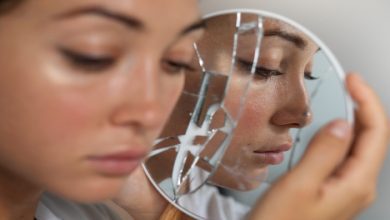Eye Health
By Dr S.S. Gill
In our continuing series on Eye Health, Consultant Ophthalmologist Dr S.S. GILL talks to us about Xanthelasma Palpebrum.


The fatty plaques are very easy to spot and have often been a cosmetic nightmare to the fairer sex because it is situated on an obvious part of the face. They are found on the upper or lower eyelid, usually closer to the nasal bridge or medial canthus region. These plaques usually start as small soft velvety papules on the inner side of the eyelids. They may grow in size over several months to form flat larger plaques. No pain or discomfort is involved. They commonly start developing in the teenage years and then peak in the fourth and fifth decades of life.
CAUSES OF XANTHELASMA
High triglyceride and cholesterol levels have been known to be associated with individuals having xanthelasma. However, it is also not uncommon to see people having xanthelasma but having no problems with elevated cholesterol. There is a predominance of xanthelasma in women than in men. It may also be associated with metabolic conditions like diabetes mellitus especially when it’s uncontrolled.
INVESTIGATIONS
Always get a blood test done which must include plasma lipid levels as well as LDL cholesterol and HDL cholesterol levels. Don’t be surprised if these are normal as it may be high only in about 50% of patients having xanthelasma.
TREATMENT
Medical Treatment: If one is diagnosed to have elevated lipid cholesterol level, then it would be important to get this under control. Unfortunately, even with the control of cholesterol, they do not often reverse or regress in their size but perhaps help reduce recurrences.
Surgical Treatment: This would be the best option. A minor surgical removal solves the problem quite easily. The possible tools used to remove a xanthelasma vary from chemical cauterization, cryotherapy and laser ablations. The method of choice of removal is not very important as all the methods are equally effective. The various options may be discussed with your treating doctor.
OUTCOMES
Recurrence is not uncommon. Almost 25% of patients may have a repeat plaque forming especially in those who have elevated blood cholesterol. Some women resort to cover-up using eye make-up and this is fine. Do take note that there are no miracle creams or ointments that can remove such fatty plaques. Buying them may only add to your frustration especially if you have spent a bomb purchasing those ‘miracle creams’.
IMPORTANT TAKE HOME MESSAGE
Based on a long study (1976-2009) of approximately 13,000 people, it was found that those with xanthelasma were more prone to suffer from heart disease. So do take note of this and get yourself checked should you have a xanthelasma problem.


